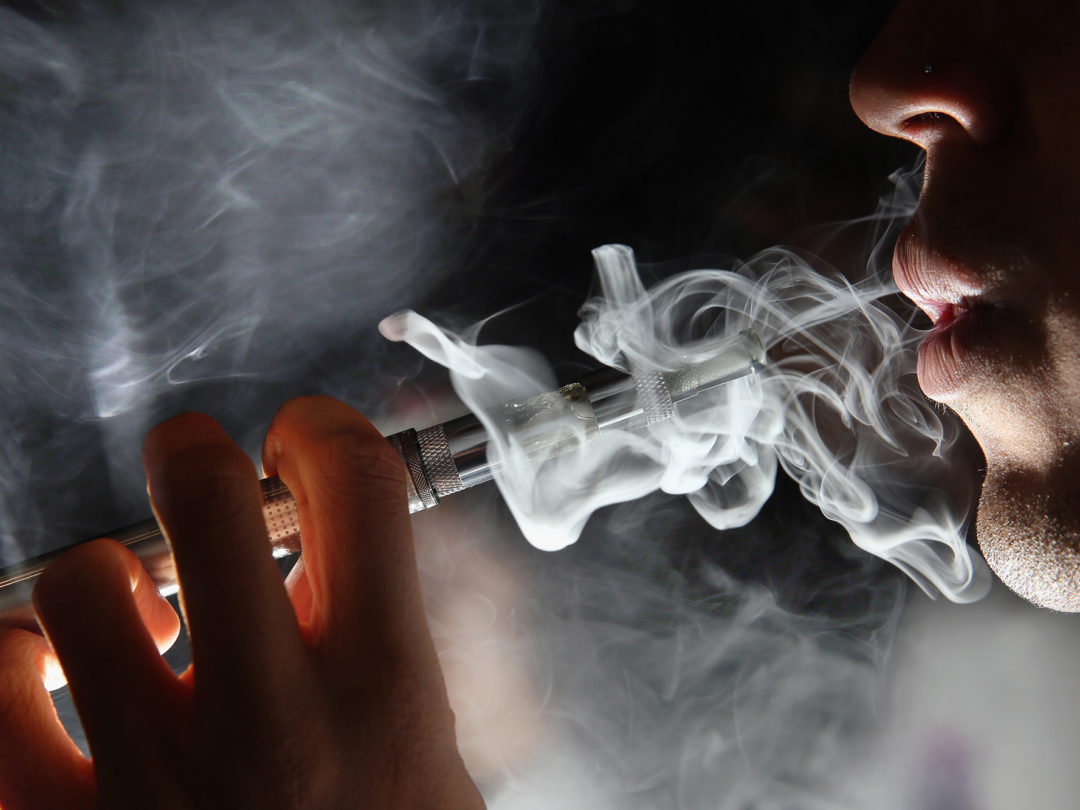
Visit Our Sponsors |
|
|
|
|
|
|
|
|
|
|
|
|
|
|
|
|
|
|
|
|
|
|
|
|
|
|
|
|
|
|
|
|
|
|
|
|
|
|
|
|
|
|
|
|
|
|
|
|
|
|
|
|
|
|
|
|
|
|
|
|

Federal health officials said 530 people have fallen ill from the mysterious vaping-related lung ailment that has raised alarms across the U.S., up from 380 confirmed and probable cases that the government reported last week.
Seven people have died from the illness, the Centers for Disease Control and Prevention said at a briefing Thursday. Officials said they still hadn’t determined a cause of the ailment, and that there didn’t appear to be one product or substance involved in all instances. Cases have been identified in 38 states.
“We are leaving no stone unturned,” said Mitchell Zeller, director of the Center for Tobacco Products at the U.S. Food and Drug Administration, who spoke at the briefing.
Parallel to the public health investigation, the FDA’s enforcement arm has also opened a criminal probe focusing on the vaping industry’s supply chain, Zeller said.
The sudden surge of vaping illnesses, combined with an explosion of underage use of e-cigarettes, has forced public health officials to rapidly reassess what had been lax regulation of the fledgling industry.
Around the U.S., doctors have now seen hundreds of cases where patients have shown up in the emergency room, suddenly stricken with dangerous respiratory damage. Their lungs looked like they’d been ravaged by a disease, or as if they’d been exposed to a noxious industrial chemical. The common denominator was that they had all recently used vaping products.
Over the past several years, there have been a limited number of similar case reports, raising the question of whether there might have been other older incidents that were missed. But the severity and number of recent cases suggest that something has changed in the vaping devices that people are using, doctors say.
The vaping illnesses have been reported most often in patients inhaling products with THC, the key psychoactive ingredient in cannabis. Some were using vaping and e-cigarette devices with both THC and nicotine, while a small number were using nicotine devices alone.
Some patients with vaping-related lung illnesses have had an unusual finding in their lungs: immune cells called macrophages that were filled with oil. That could be because the cells are engulfing ingredients from vaping devices. Or it might be that the vaping somehow disrupts natural lung processes, causing the cells to choke on lipids naturally found in the lungs, researchers said.
On Sept. 5, state health officials in New York pointed to vitamin E acetate as a likely culprit. While thought to be harmless when used as a nutritional supplement, it could carry risks when inhaled and has been found in some products, said New York health officials. But other doctors interviewed by Bloomberg said the culprit is still unknown.
Public-Health Problem
The initial hope was that vaping could help curtail tobacco use, which leads to more than 480,000 deaths a year in the U.S. Tobacco-related illnesses are the leading cause of preventable death in the world. But an explosion in the use of vaping products by teenagers — many of whom said that they had never smoked cigarettes — has led the FDA to call teenage vaping an epidemic.
The use of e-cigarettes by 10th and 12th graders doubled in the past two years, according to data released this week by the National Institute on Drug Abuse, part of the National Institutes of Health. According to the survey, 1 in 4 high school seniors reported vaping nicotine in the month prior, and 1 in 5 sophomores reported the same.
Juul, the e-cigarette sold by Juul Labs Inc., has been particularly popular with young users. Shares of Altria Group Inc., which made a $12.8 billion investment in the startup last year, dropped after the updated case count. They were down 2.1% to $39.98 at 12:33 p.m. in New York.
“With this particular epidemic, as others have said, there are so many unknowns,” Patrice Harris, president of the American Medical Association, said Thursday in an interview. “This is the known: We know the dangers of nicotine and we do not want to get another generation of children addicted to nicotine.”
RELATED CONTENT
RELATED VIDEOS
Timely, incisive articles delivered directly to your inbox.







